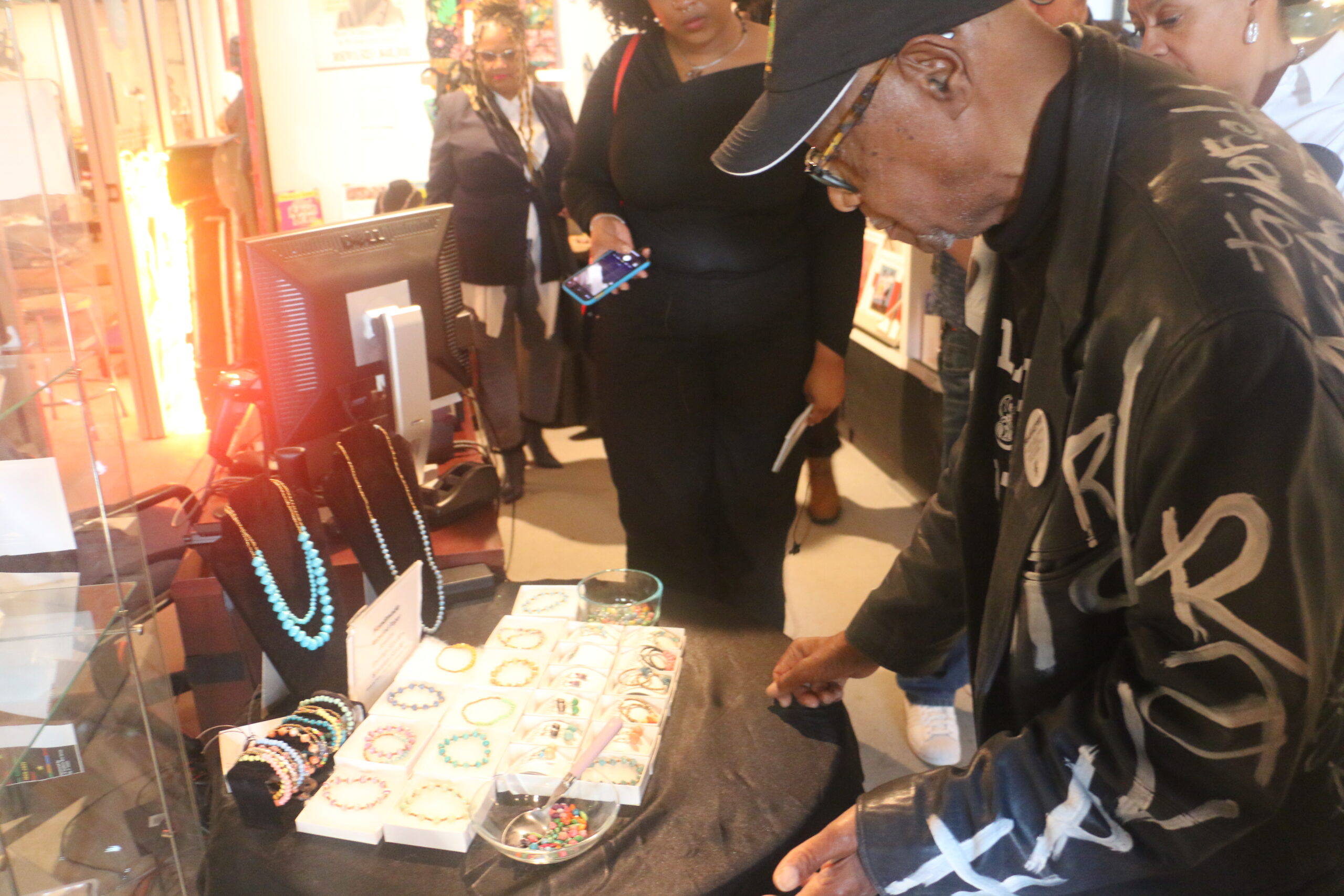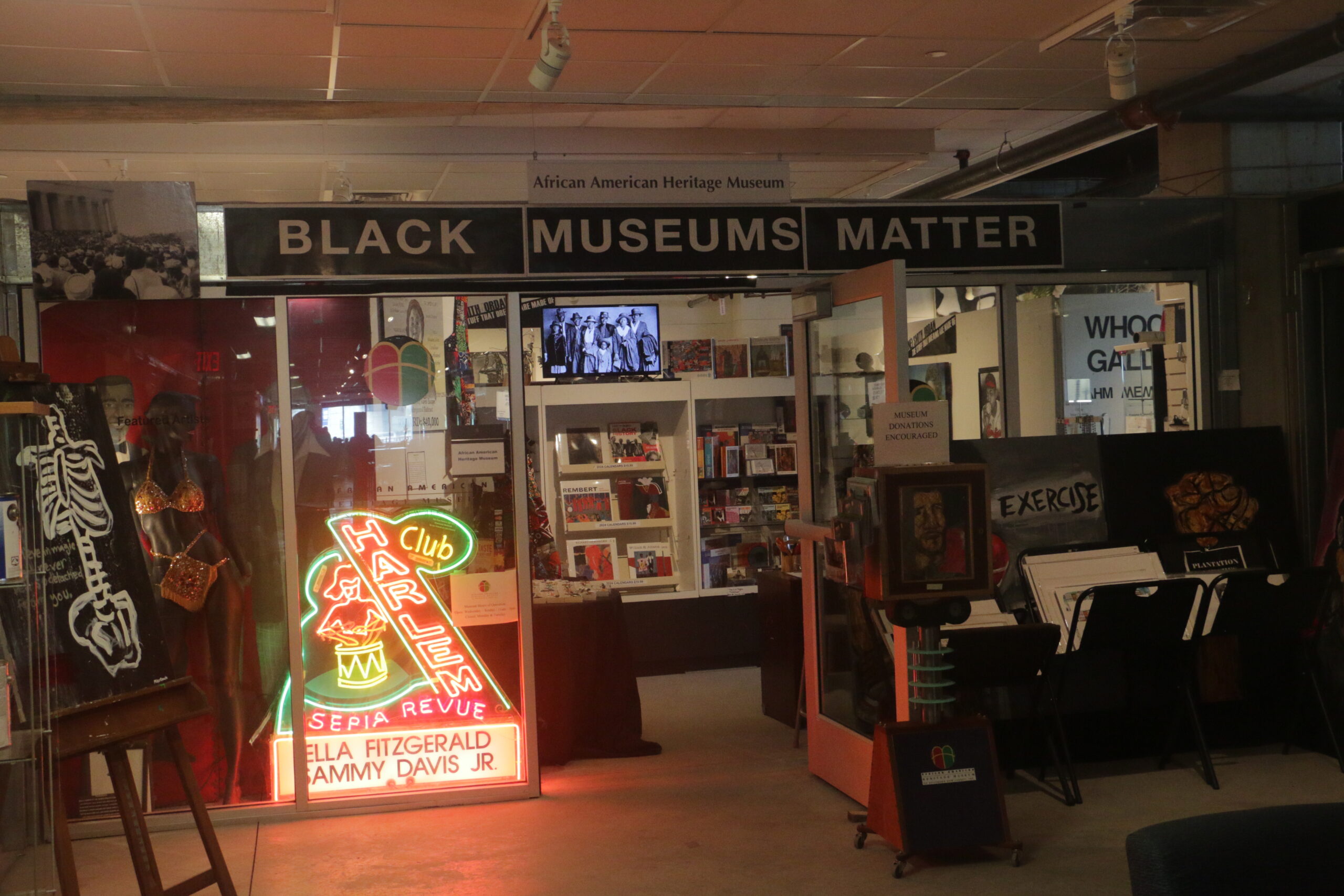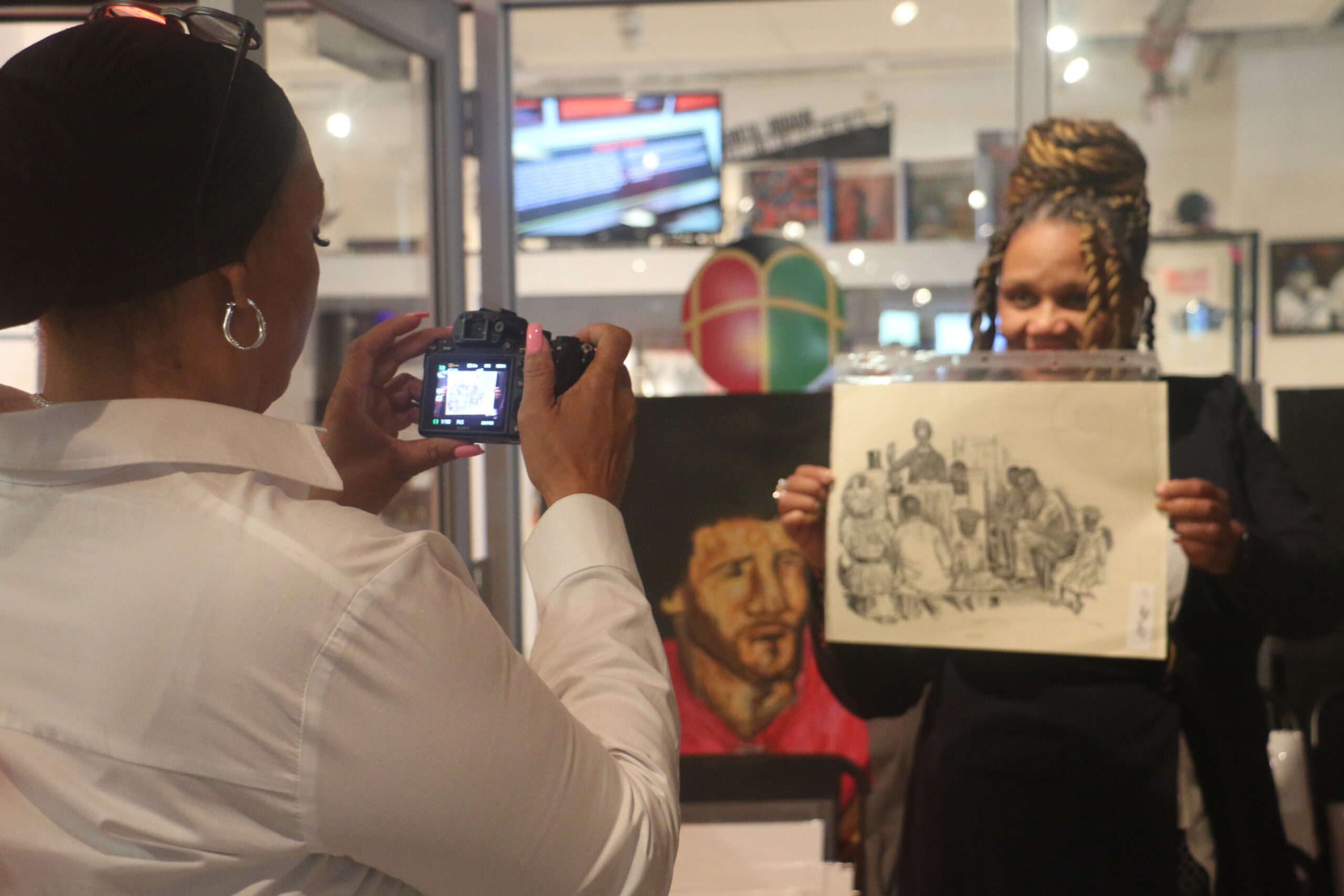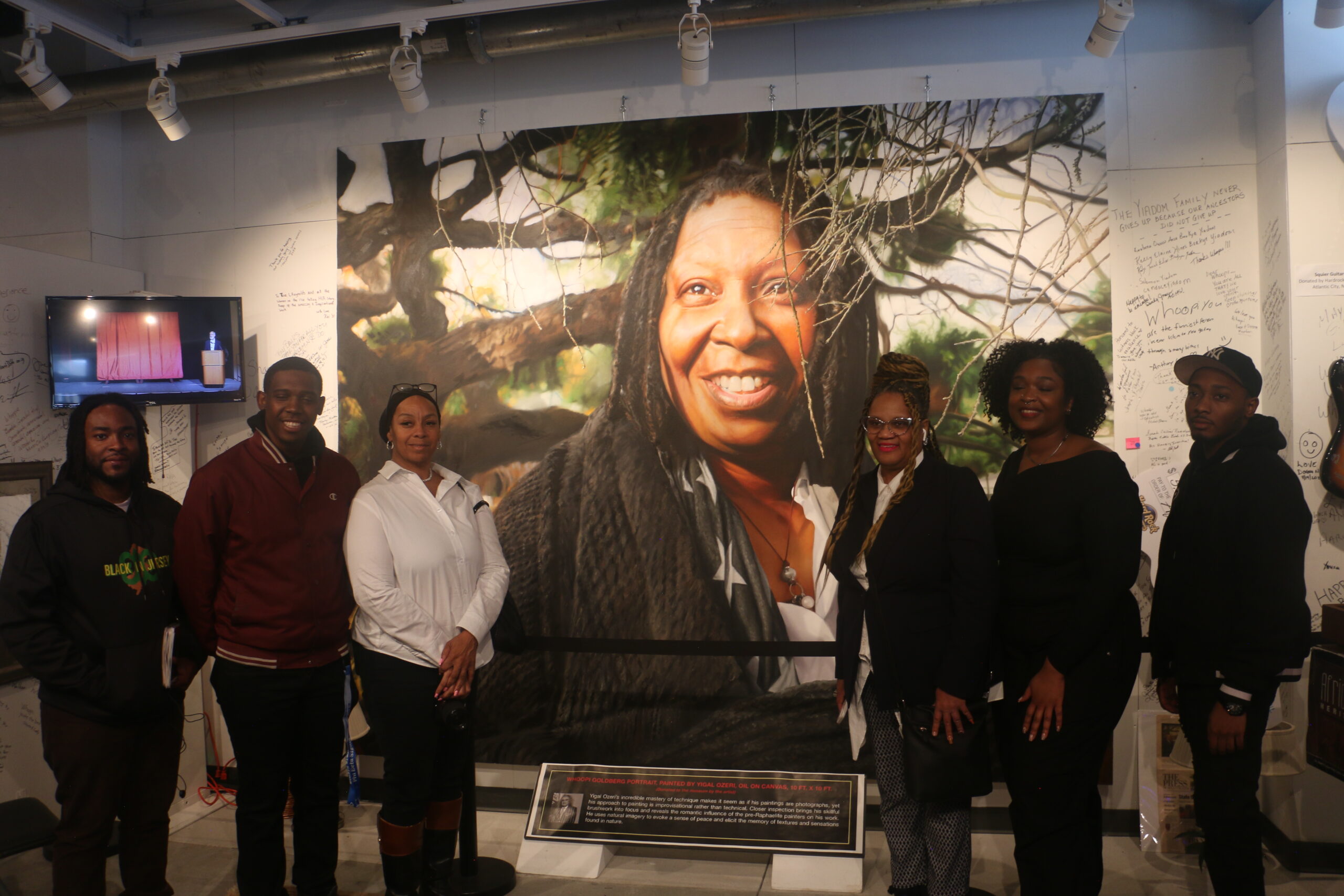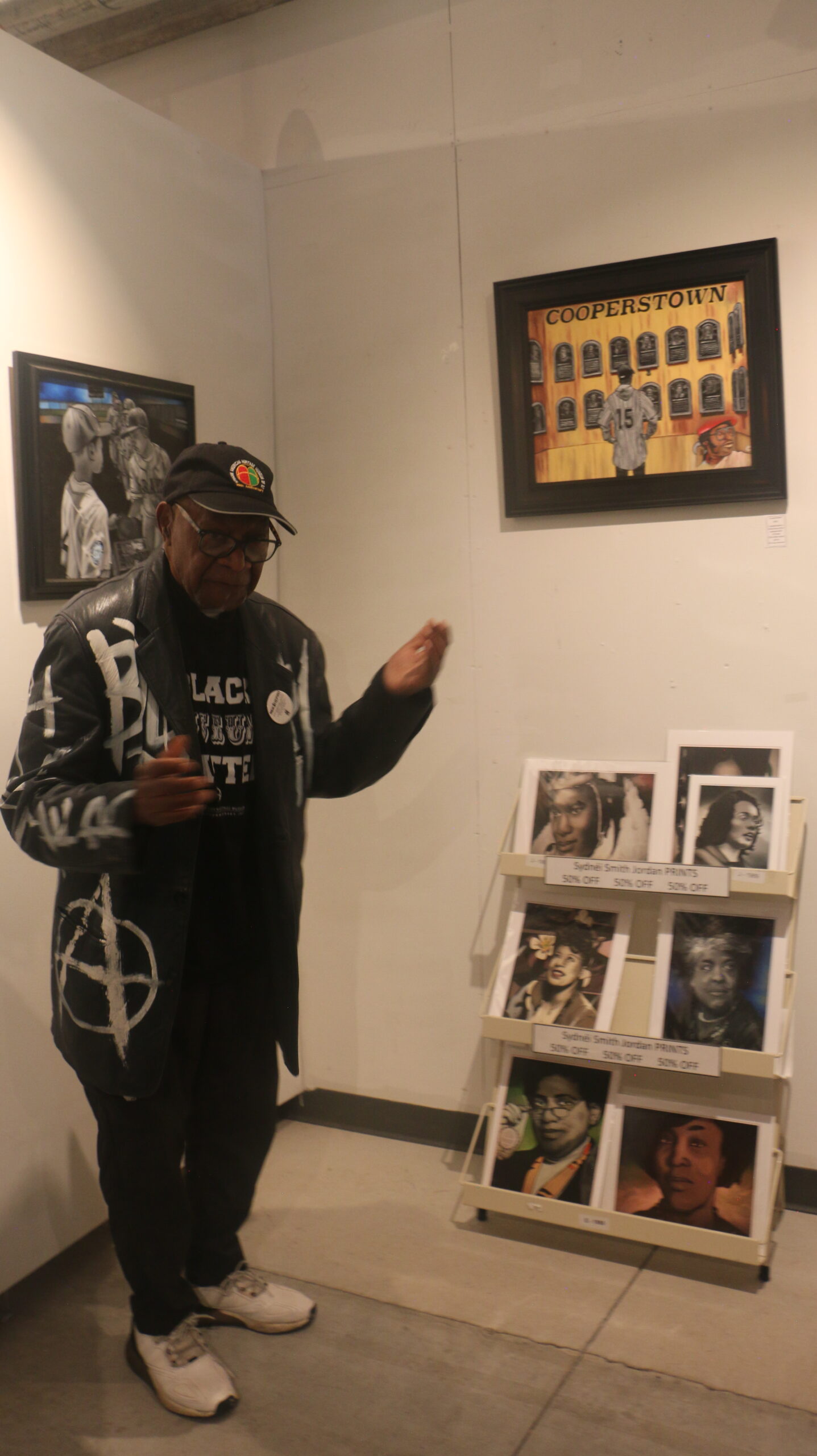NJ Museum Explores Segregation and Stereotypes Through Artifacts
Article and Photos By SJCRP Journalism Fellows
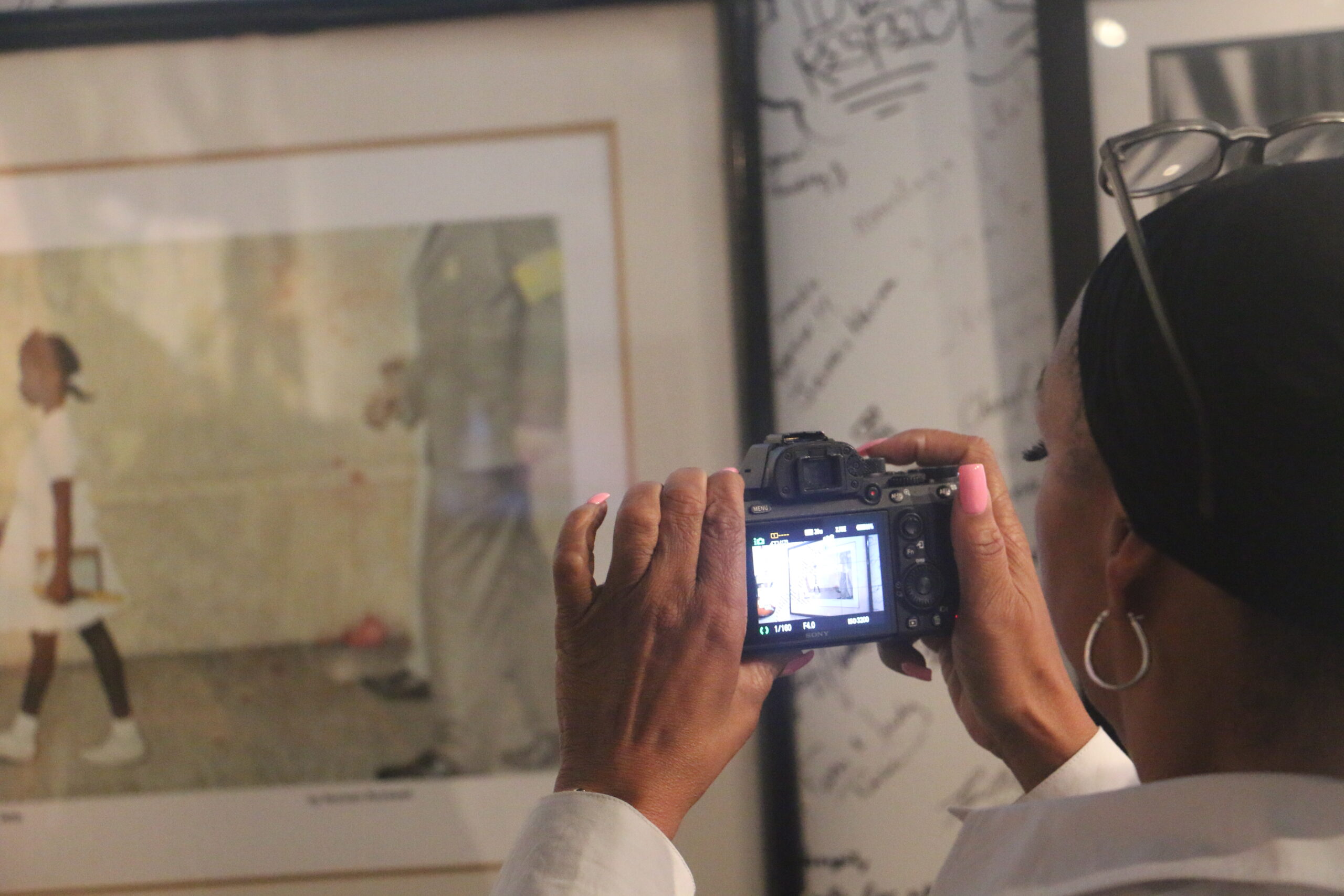
In February, during Black History Month, the first 2024 South Jersey Community Reporter Fellows group convened. The cohort, comprising six members, wasted no time delving into pressing questions: How are minority communities portrayed in the media? What constitutes hate speech, and should it be prohibited? Are stereotypes still prevalent, and if so, how? These thought-provoking questions sparked a robust and intergenerational discussion, ultimately highlighting the significance of historical understanding.
The first session underscored the pivotal role of history in shaping contemporary misconceptions, racist stereotypes, and the perpetuation of harmful narratives. Prior to their April visit to the African American Heritage Museum in Atlantic City, the reporters embarked on individual research endeavors exploring the historical origins of stereotypes, notably those targeting enslaved Africans.
Notably, they delved into the work of Samuel Cartwright, an antebellum physician who propagated the fallacious notion of Black individuals as inherently lazy.
Cartwright’s unfounded theory of “dysaesthesia aethiopica” posited that Black individuals were afflicted with a condition that rendered them lethargic due to insensitivity in their skin. This egregious falsehood, like hate speech, continues to reverberate in contemporary discourse. Culturally responsive education, including historically Black colleges and universities, and Black museums have been crucial in dispelling such harmful narratives, according to Ralph Hunter, the founder of the African American Heritage Museum of Southern New Jersey (AAHMSNJ).
Hunter’s quest for historical truth has led him on a journey into the heart of a forgotten past. Hunter went to a house that appeared to be on the verge of vacancy, he knocked on the door and the owners let him in. Hunter looked around to see if he could find some antiques. Beneath the floorboards of a house, he uncovered charcoal sketches of a prominent Black Atlantic City family. Through the careful study of clothing, poses, and expressions, viewers are transported back in time, invited to witness the dignity of those who came before.
By piecing together the stories behind the sketches, historians gain invaluable insights into the lives of black communities during a pivotal period in history. This is significant because art and history are always interwoven. The importance of capturing a moment through the artist lens of a camera and using pastels to bring color to these images gives us an account of African Americans that may never have been shown.
The museum, a collection of artifacts including remnants of the 1800s, transcend their physical form, serving as windows into a past eras of cultural richness and societal economics. What makes Mr. Hunter’s discovery of the sketches remarkable is not just the tangible wealth depicted in the portraits, but the intangible essence of humanity that radiates from them.
The museum also offer a mobile exhibit ready to provide students throughout the state with an intimate understanding of the cultural history of African Americans. As visitors come to the museum to behold these treasures or encounter them at school, they become part of a collective journey of remembrance and reflection. Not only is it important for viewers to witness and see these paintings in person, it’s also important for historians to understand the lengths at which Hunter went to uncover the items.
Stumbling upon newly vacant homes was not the only way Hunter gathered his collection. Hunter was approached by a former policeman who asked him if he would take a Ku Klux Klan robe but on the condition that it be after his death. A few years later a woman came in with instructions from her father’s will stating she would bring that very robe to Hunter’s museum in the course of his death.
Hunter, in a playful, yet serious undertone, asked the group, “Now was it his?”
While this question provided comedic relief it forces the realization that the way in which Hunter receives the artifact, or the actual artifact itself, may not always reflect the positive side of history. AAHMSNJ showcases not only the beauty, like paintings found under floorboards but also the social/emotional brutality of stereotypes.
AAHMSNJ dedicated an entire exhibit to stereotypes. This exhibit reveals the harsh truths of companies still loved today. Colgate-Palmolive, a national household brand, once sold toothpaste called “Darkie.” A head sized piggy bank in the form of a black man with overemphasized lips and melanism, was a caricature named “Jolly Nigger Bank.” Continuing to perpetuate negative characteristics, films like “Birth of a Nation,” and minstrel shows like “Amos and Andy,” were enjoyed at the expense of the dignity of every black person.
The exhibit takes visitors on a trip down memory lane with household staples like Cream of Wheat, Uncle Ben’s, and Aunt Jemina offering nostalgia on one hand and ancestral humiliation on the other. Stereotypes are made to control the perception of one particular group or thing truly only reflecting the distortion of the mind of the creator.
As the group proceeded on their tour guided by Hunter, they encountered a striking mural featuring a brown face adorned with luscious locks, marking the entrance to the Whoopi Goldberg exhibit. Introducing the group to Vaughn Glapion, a longstanding member of the Atlantic City community, Hunter facilitated a poignant dialogue on the enduring impact of landmark cases such as Brown v. Board of Education.
Glapion, a New Orleans native of Creole descent, provided firsthand accounts of the social ramifications of desegregation, reflecting on his experiences during the era of Brown v. Board of Education. His candid recollections underscored the persistent challenges of segregation and the enduring struggle for racial equity.
“I don’t know that we were ever integrated,” Glapion said. “I only attended Black schools and can’t say that much has changed.”
Glapion, standing between paintings of Ruby Bridges and Thurgood Marshall, discussed the social impact a major case like the Brown v Education had on him personally as a Black man raised in the south.
“St. August is still an all black school,” Glapion said. “In fact the school systems are still very much segregated throughout the land.”
Glapion shed light on the stark reality that, despite strides made, systemic segregation and social inequities persist within educational systems.
According to the National Center for Education Statistics, 60% percent of Black and Latino students now attend public schools composed of at least 75% students of color.
From start to finish, Hunter and his partners introduced the group to a historical landscape fraught with segregation, power dynamics, and societal challenges, emphasizing the importance of acknowledging the past to shape a more equitable future.
The encounter with Glapion served as a poignant reminder of the arduous journey toward racial equality and social justice. The group’s visit to the museum sparked profound introspection, prompting discussions on the enduring legacy of hate, stereotypes, and social injustices. Through immersive experiences like these, participants were able to traverse through time, connecting past struggles to present-day challenges, and reaffirming the imperative of understanding history to forge a more equitable future.
